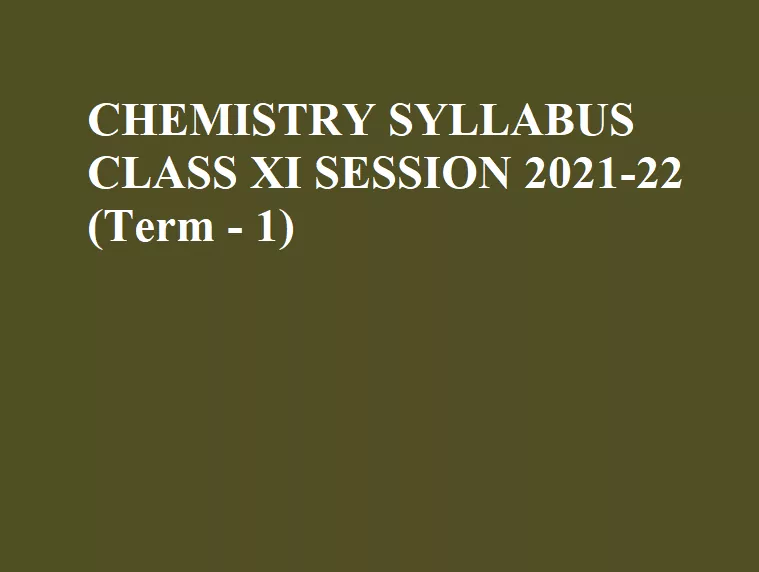| CHEMISTRY SYLLABUS CLASS XI SESSION 2021-22
(Term-I) |
|||
| S.NO. | UNITS | SYLLABUS | Marks |
| 1. | Some Basic Concepts of Chemistry | General Introduction: Importance and scope of Chemistry. Atomic and molecular masses, mole concept and molar mass, percentage composition, empirical formula and molecular formula, chemical reactions, stoichiometry, and calculations based on stoichiometry. | 11 |
| 2. | Structure of Atom | Bohr’s model and its limitations, the concept of shells and subshells, dual nature of matter and light, de Broglie’s relationship, Heisenberg uncertainty principle, the concept of orbitals, quantum numbers, shapes of s, p, and d orbitals, rules for filling electrons in orbitals – Aufbau principle, Pauli’s exclusion principle, and Hund’s rule, electronic configuration of atoms, stability of half-filled and completely filled orbitals |
|
| 3. | Classification of Elements and Periodicity in Properties | Modern periodic law and the present form of the periodic table, periodic trends in properties of elements -atomic radii, ionic radii, inert gas radii, Ionization enthalpy, electron gain enthalpy, electronegativity, valency. Nomenclature of elements with atomic number greater than 100. |
4 |
| 4. | Chemical Bonding and Molecular Structure | Valence electrons, ionic bond, covalent bond, bond parameters, Lewis structure, the polar character of a covalent bond, the covalent character of ionic bond, valence bond theory, resonance, the geometry of covalent molecules, VSEPR theory, the concept of hybridization, involving s, p, and d orbitals, and shapes of some simple molecules, molecular orbital theory of homonuclear diatomic molecules(qualitative idea only), Hydrogen bond. | 6 |
| 5. | Redox Reactions | Concept of oxidation and reduction, redox reactions, oxidation number, balancing redox reactions, in terms of loss and gain of electrons and change in oxidation number. | 5 |
| 6. | Hydrogen | Position of hydrogen in the periodic table, occurrence, isotopes, hydrides-ionic covalent and interstitial; physical and chemical properties of water, heavy water, hydrogen as a fuel | |
| 7. | Organic Chemistry: Some Basic Principles and Techniques | General introduction, classification and IUPAC nomenclature of organic compounds. Electronic displacements in a covalent bond: inductive effect, electromeric effect, resonance, and hyperconjugation. Homolytic and heterolytic fission of a covalent bond: free radicals, carbocations, carbanions, electrophiles and nucleophiles, types of organic reactions. |
9 |
|
CHEMISTRY SYLLABUS CLASS XI SESSION 2021-22 (Term-I) |
|||
Advertisement



